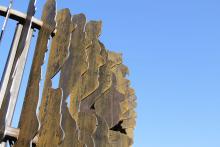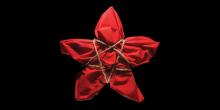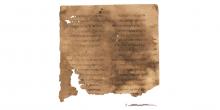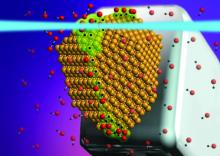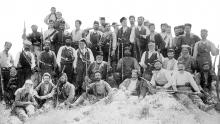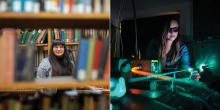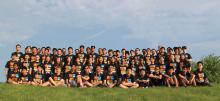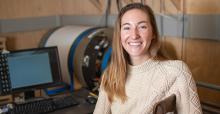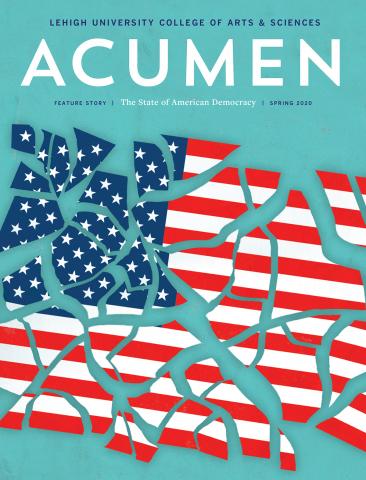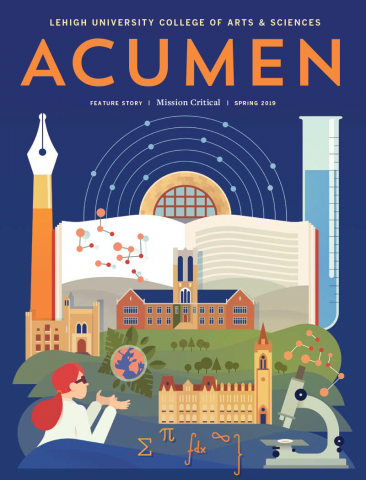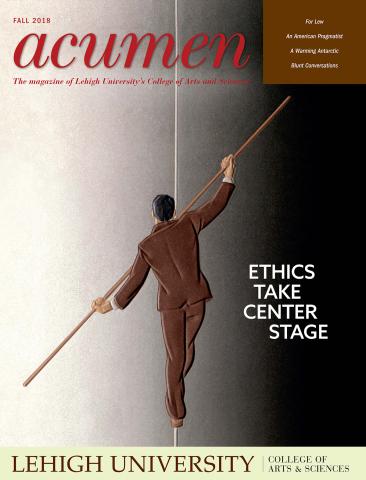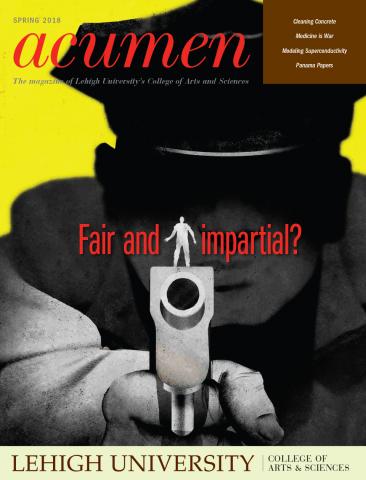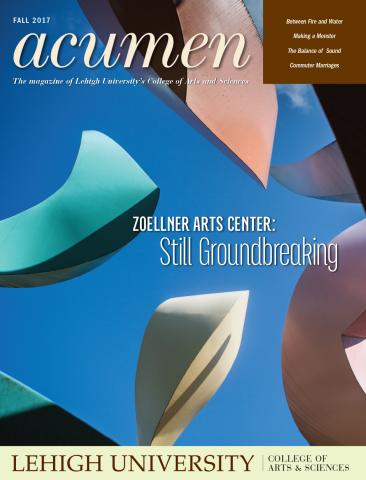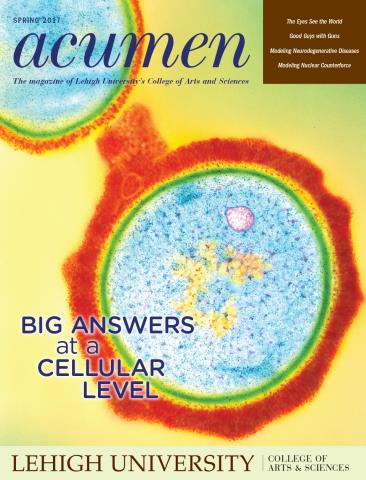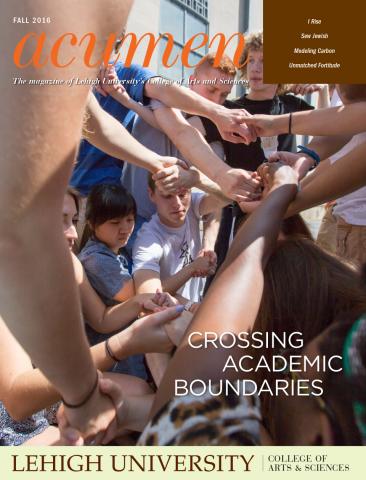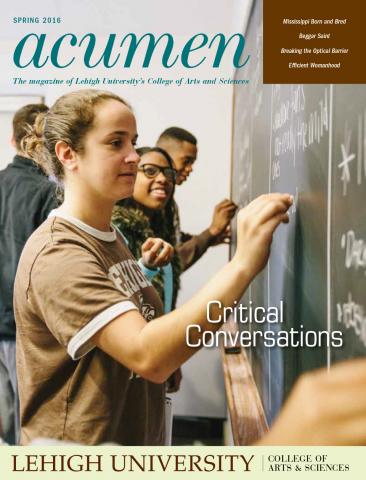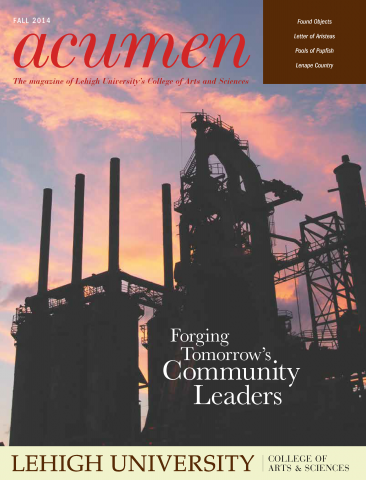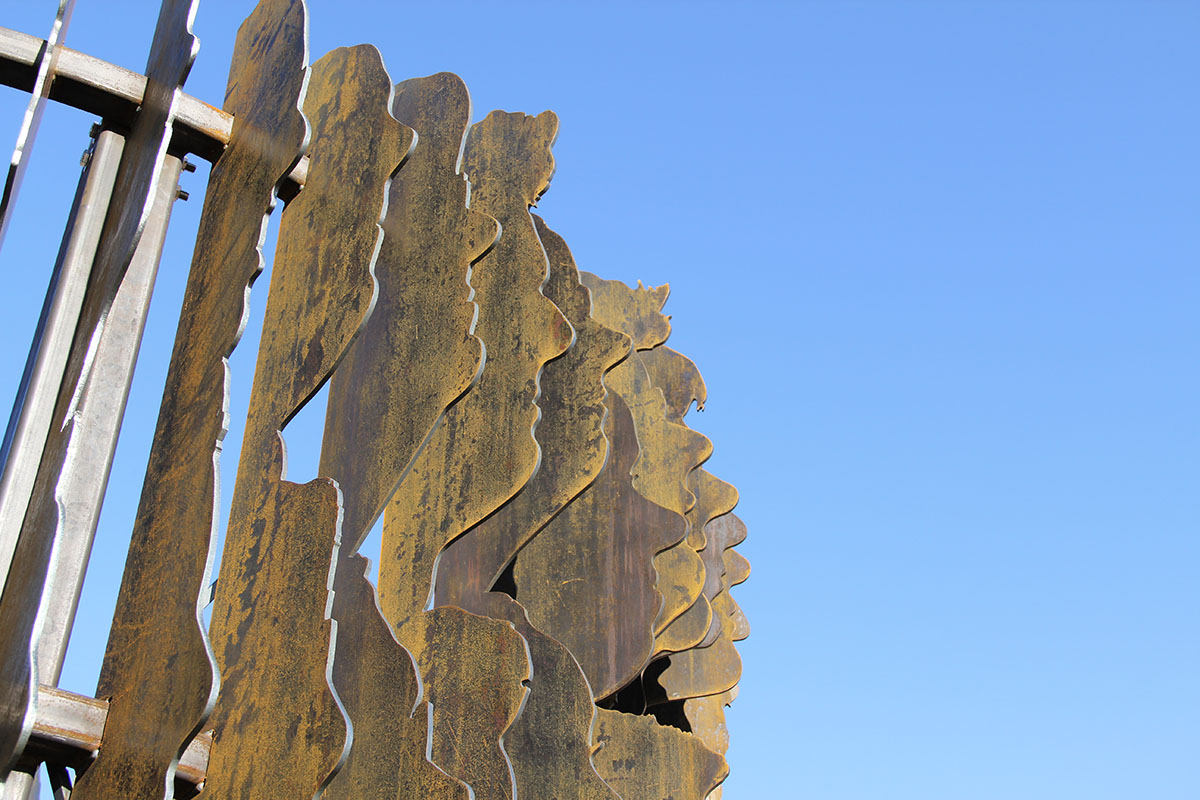
A large-scale sculpture rose in October on the campus of Wayne State College in Nebraska. It is named About Face, and it is the latest public installation by artist Wes Heiss.
Heiss, associate professor of product design in the department of art, architecture and design, was drawn by the possibilities of presenting different perspectives from every angle.
“We wanted something that, as you drive around it, is satisfying to look at,” he says. “You want to give something that is generous, accessible and meaningful to the people passing by.”
Together with his creative partner, Marek Walczak, Heiss created a steel sculpture that is a record of the people who create a time and place, a way of both eulogizing the present and a way to look forward. Its placement at the center of a roundabout makes it a pivotal entrance to the college, with paths crossing from classroom to residence hall to lab.
About Face is a drum-shaped form with profiles of people at the college—a welcoming committee and symbol for the community. The sculpture consists of 72 “totems,” totaling 259 individual silhouettes of students and faculty. Each face measures approximately 24 inches high. The artists collected the profiles during an on-site photo session. The artists asked volunteers to stand in front of a sheet of Mylar. They used a video projector to cast light onto the sheet, creating a silhouette of each person’s face. Heiss and Walczak then photographed the image on the sheet. Everyone was invited to have a profile included in the piece, making the sculpture a truly interactive, community-based work of art.
Two years in planning and fabrication, the project took nearly a month to produce silhouettes that could be cut from metal and maintain needed detail. Heiss and Walczak used Adobe Illustrator and CAD to laser-cut the silhouettes from corten steel. The sculpture’s appearance changes with differences in environmental conditions, and the artists chose steel in recognition of the extreme seasons found on the plains. Using this type of metal eliminates the need for painting, and it forms a stable, rust-like appearance after several years’ exposure to weather Fabricated in the Lehigh Valley, the sculpture was trucked to Nebraska, where assembly took just one day.
“With a work like this, there is a lot of sculptural play early in the thinking and development process, but once it’s time to actually execute the piece, you have to switch to thinking like a designer and fabricator,” Heiss says. “That’s what I like about the process. It requires working and experimenting in a lot of different ways up to a certain point, but then you need to commit. That makes solving problems discrete issues, and the challenges become manageable instead of being gargantuan tasks.”
The sculpture was made possible because of a building renovation. The college’s library received a makeover, and Nebraska law provides 1 percent of original construction costs of certain capital construction projects to set aside and be used for the acquisition of works of art.
Heiss and Walczak are part of an interactive civic-art design collaborative. Since 2007, they have completed three major public artworks. In addition to the one at Wayne State College, they have created designs for a streetscape in Denver and for a recreation center in Stapleton, both in Colorado.


